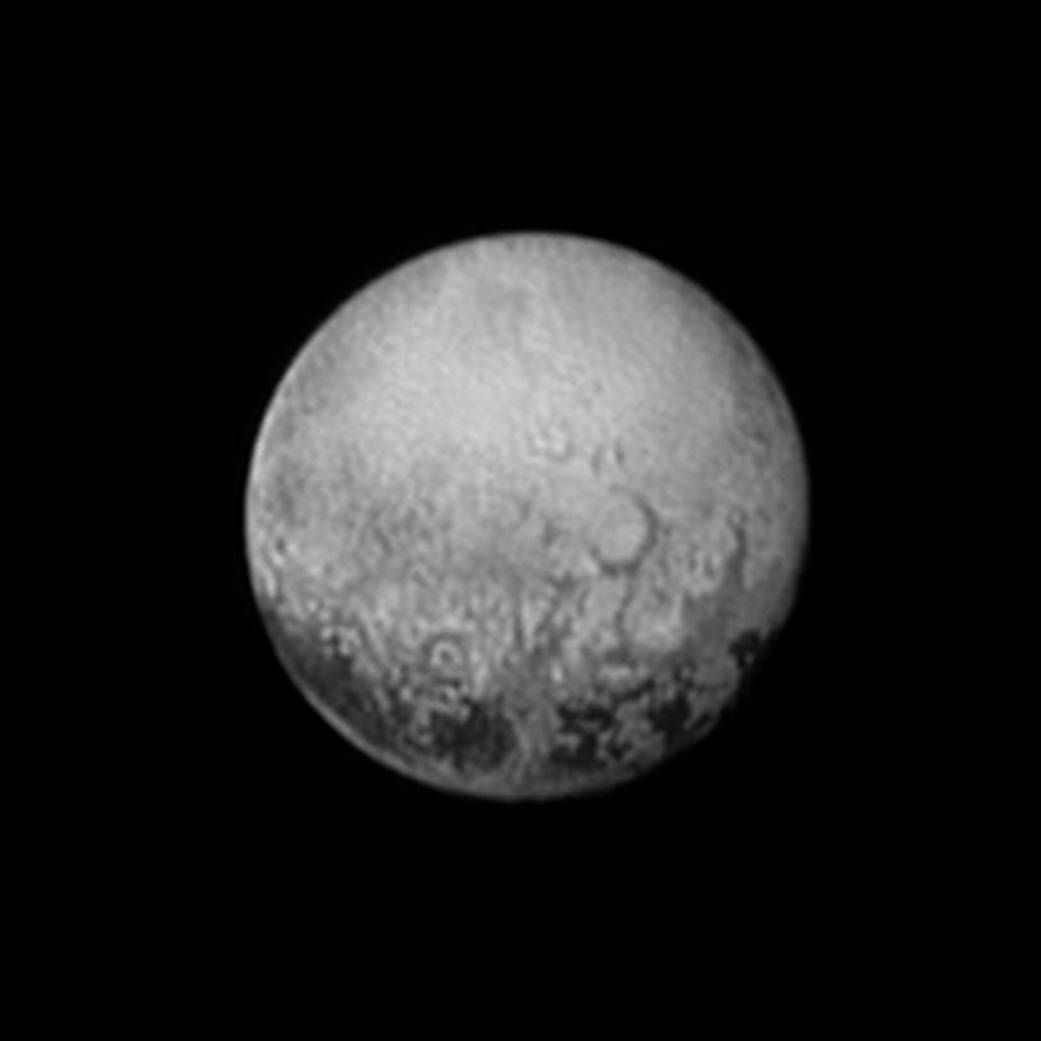
NASA's New Horizons spacecraft has captured its last and best photo of Pluto's four mysterious dark spots.
New Horizons imaged the patches on Saturday (July 11), from a distance of 2.5 million miles (4 million kilometers). The dark spots lie on Pluto's far side, which always faces the dwarf planet's largest moon, Charon. New Horizons won't be able to see the far side when it zooms through the Pluto system during its highly anticipated flyby on Tuesday morning (July 14), mission team members said.
The new photo is "the last, best look that anyone will have of Pluto’s far side for decades to come," New Horizons principal investigator Alan Stern, of the Southwest Research Institute in Boulder, Colorado, said in a statement.
The four dark patches, each of which is about 300 miles (480 km) wide, link up with a larger dark belt that circles Pluto along the equator. The spots' regular spacing and similar size continue to puzzle mission scientists.
"We can’t tell whether they’re plateaus or plains, or whether they’re brightness variations on a completely smooth surface," Jeff Moore, of NASA’s Ames Research Center in Moffett Field, California, said in the same statement.
"When we combine images like this of the far side with composition and color data the spacecraft has already acquired but not yet sent to Earth, we expect to be able to read the history of this face of Pluto," added Moore, who leads New Horizons' geology, geophysics and imaging team.
The new image reveals other intriguing details, researchers said, including seemingly polygonal shapes formed by intersecting linear features.
Get the Space.com Newsletter
Breaking space news, the latest updates on rocket launches, skywatching events and more!
On Tuesday, New Horizons will cruise within 7,800 miles (12,500 km) of Pluto's near side — which sports a huge, bright heart-shaped feature — at a speed of 30,800 mph (49,600 km/h). Closest approach will occur at 7:49 a.m. EDT (1149 GMT).
The probe will gather a variety of data using its suite of seven science instruments, finally lifting the veil on Pluto, which has remained largely mysterious since its 1930 discovery.
Follow Mike Wall on Twitter @michaeldwall and Google+. Follow us @Spacedotcom, Facebook or Google+. Originally published on Space.com.
Join our Space Forums to keep talking space on the latest missions, night sky and more! And if you have a news tip, correction or comment, let us know at: community@space.com.

Michael Wall is a Senior Space Writer with Space.com and joined the team in 2010. He primarily covers exoplanets, spaceflight and military space, but has been known to dabble in the space art beat. His book about the search for alien life, "Out There," was published on Nov. 13, 2018. Before becoming a science writer, Michael worked as a herpetologist and wildlife biologist. He has a Ph.D. in evolutionary biology from the University of Sydney, Australia, a bachelor's degree from the University of Arizona, and a graduate certificate in science writing from the University of California, Santa Cruz. To find out what his latest project is, you can follow Michael on Twitter.